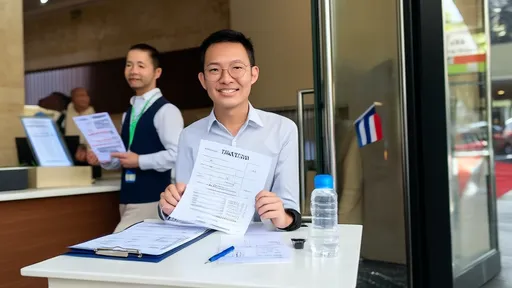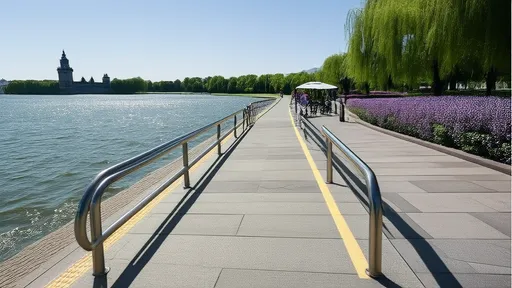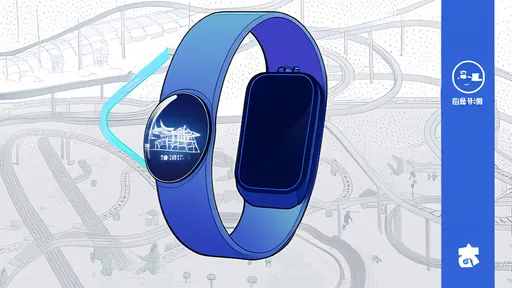Japan has recently introduced a streamlined electronic visa application process for single-entry visas, allowing travelers to apply directly through their smartphones. This digital shift aims to simplify the traditional paperwork-heavy procedure, making it more accessible for tourists and business visitors alike. The move aligns with Japan's broader efforts to modernize its immigration systems and boost tourism in the post-pandemic era.
The new e-visa system eliminates the need for physical documents or in-person visits to embassies for many applicants. Instead, travelers can complete the entire process from their mobile devices, uploading required documents and making payments online. This convenience is particularly beneficial for last-minute travelers or those living far from Japanese diplomatic missions. However, applicants should note that certain nationalities may still require additional screening or in-person interviews.
Understanding the eligibility criteria is crucial before beginning the application process. The single-entry e-visa typically permits stays of up to 90 days for purposes like tourism, business meetings, or visiting relatives. Not all countries are included in this program yet, so checking the official Japanese Ministry of Foreign Affairs website for the latest list of eligible nationalities is essential. The requirements generally include a valid passport, recent photograph, travel itinerary, and proof of financial means.
Preparing digital copies of necessary documents in advance can significantly smooth the application process. These typically include a clear scan of your passport's biographical page, a digital passport-style photo, proof of accommodation in Japan, and evidence of return or onward travel. Business travelers may additionally need invitation letters from their Japanese counterparts. All documents should be in specified formats (usually JPEG or PDF) and under size limits to ensure successful uploads.
The actual application involves creating an account on Japan's official visa portal through a smartphone browser. The interface guides applicants through each step, from personal information entry to document uploads. Particular attention should be paid to accurately entering passport details and travel dates, as discrepancies can lead to processing delays or rejections. The system allows saving progress, which is helpful for gathering missing information without starting over.
Payment processing occurs within the same digital platform, with most major credit cards accepted. The visa fee varies depending on nationality and processing speed selected. Standard processing usually takes several business days, while expedited options may be available for urgent travel. Applicants receive email notifications at each stage, from submission confirmation to final decision.
Upon approval, the e-visa is electronically linked to the applicant's passport. Travelers must present this at Japanese immigration along with their physical passport. It's advisable to carry printed copies of the visa approval email as backup. Importantly, the e-visa has strict validity periods - typically three months from issue date for entry, so timing the application appropriately is crucial.
Common pitfalls to avoid include submitting blurry document scans, providing incomplete travel itineraries, or applying too far in advance. The system may reject photos that don't meet specifications or applications missing required fields. Double-checking all entries before submission can prevent unnecessary delays. Those with complex travel histories or previous visa denials might consider consulting with immigration specialists despite the simplified process.
The mobile-friendly design accommodates various smartphone models, though using updated browsers ensures optimal performance. Applicants in areas with unreliable internet may want to complete the process where stable connectivity is available, as timeouts during submission can create complications. The interface supports multiple languages, but providing information exactly as it appears in official documents (using Roman characters where required) reduces processing issues.
This digital transformation represents Japan's commitment to balancing security with convenience in its visa policies. While the system is designed to be user-friendly, first-time applicants should allocate sufficient time to familiarize themselves with the requirements. The efficiency of e-visas particularly benefits frequent travelers to Japan, allowing quicker turnaround between trips compared to traditional visa stamps.
As with any immigration process, regulations can change, so verifying current procedures before application remains essential. The Japanese government continues refining the platform based on user feedback, with potential expansions to include more visa categories and nationalities in the future. This mobile application method may well set a precedent for how other nations modernize their visa systems in the digital age.

By /Jul 25, 2025

By /Jul 25, 2025

By /Jul 25, 2025

By /Jul 25, 2025

By /Jul 25, 2025

By /Jul 25, 2025

By /Jul 25, 2025

By /Jul 25, 2025

By /Jul 25, 2025

By /Jul 25, 2025

By /Jul 25, 2025

By /Jul 25, 2025

By /Jul 25, 2025

By /Jul 25, 2025

By /Jul 25, 2025

By /Jul 25, 2025

By /Jul 25, 2025

By /Jul 25, 2025

By /Jul 25, 2025

By /Jul 25, 2025